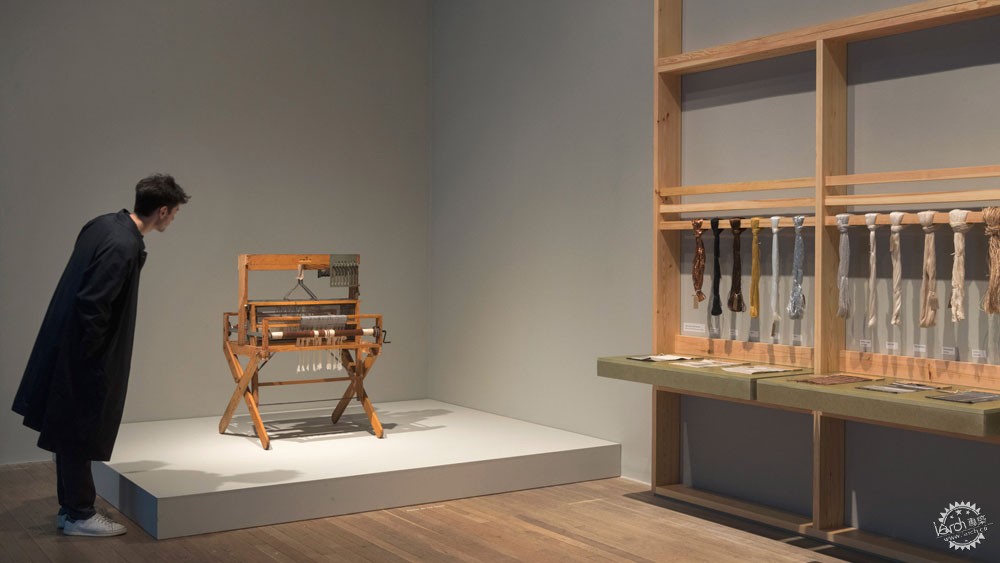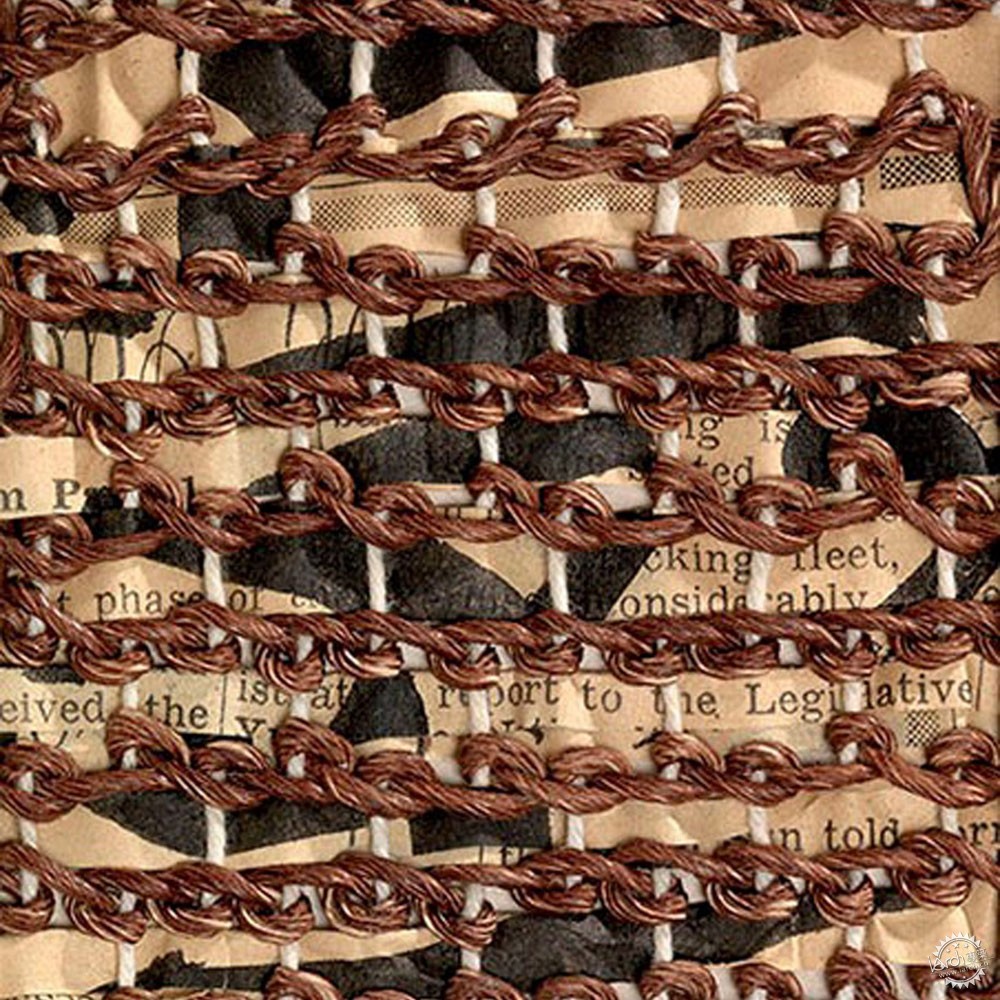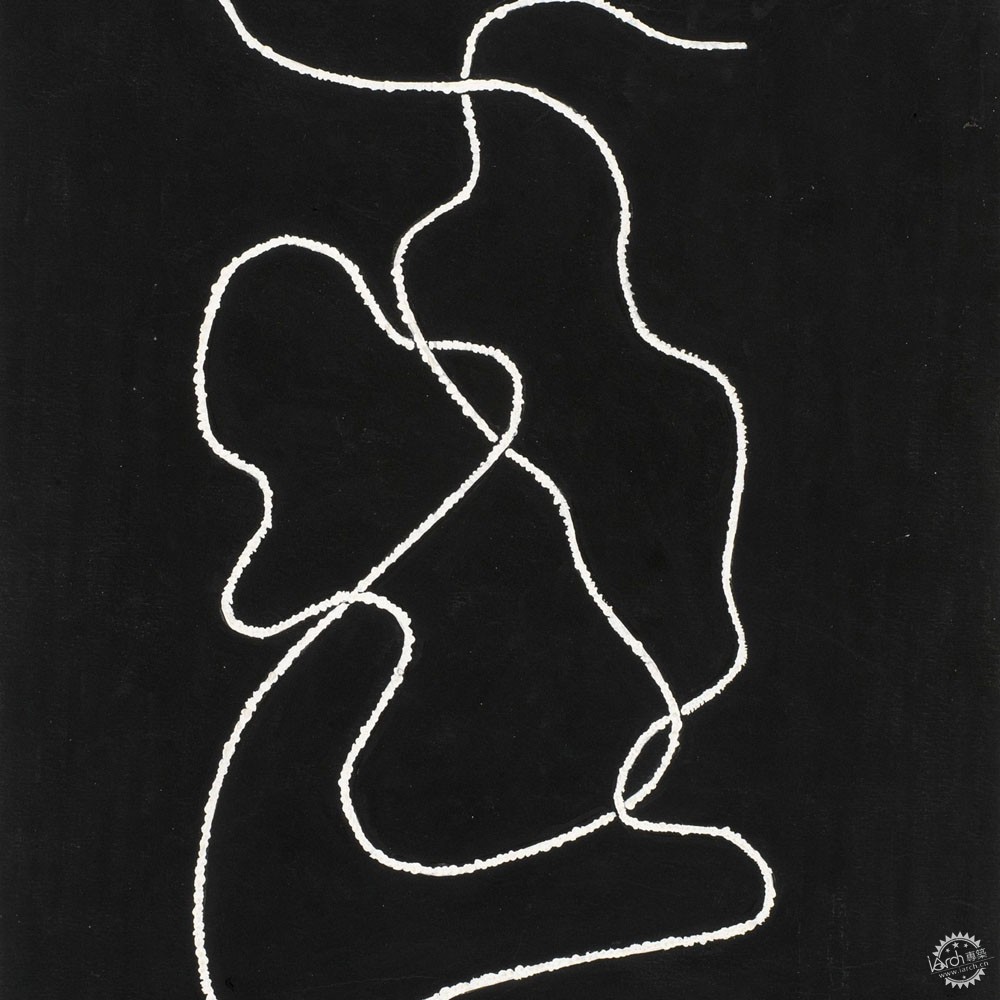
安妮·阿尔伯斯(Anni Albers)的5件纺织设计
Tate Modern curator selects five of Anni Albers' radical weaving designs
由专筑网王帅,李韧编译
泰特现代艺术馆回顾了包豪斯老师安妮·阿尔伯斯的作品,纪念她卓越的创作能力。馆长Briony Fer挑选了五种最能表达其激进思维的展品。
普遍认为,阿尔伯斯通过她异乎寻常的技术和现代教学方法,改变了人们对编织工艺的看法,同时,她通过拉丁美洲之行追溯到纺织的古老根源。
展览展示了她所使用的各种材料,例如隔声墙面上的玻璃纸,安妮·阿尔伯斯既注重工业制造,又注重手工制造。
该展览由Fer与 Ann Coxon策划,安妮·阿尔伯斯的作品在泰特现代艺术馆展出,截止时间为2019年1月27日。该展览恰逢鲍豪斯学校成立100周年。安妮·阿尔伯斯曾在该学校学习与执教。为纪念该学校成立100周年,我们进行了一系列报道来探讨学校的关键人物和项目。
在此,馆长Fer阐述了展览中最具创新性的五件作品:
Tate Modern's retrospective of weaver and Bauhaus teacher Anni Albers celebrates the broad range of her work. Curator Briony Fer picks five exhibits that best demonstrate her radical methods.
It is widely acknowledged that Albers transformed the way that the craft of weaving was viewed, by looking forward in her unusual techniques and modern teaching methods, and back to its ancient roots on her trips to Latin America.
The exhibition demonstrates the wide range of materials she used, such as cellophane in a sound-proofing wall-covering, and her embrace of both industrial manufacture and weaving on the hand-loom.
Curated by Fer and Ann Coxon, Anni Albers runs until 27 January 2019 at Tate Modern. The show coincides with 100 years since the foundation of the Bauhaus school, where she studied and taught. To mark the centenary of the school's founding, we've created a series of articles exploring the school's key figures and projects.
Here Fer explains five of the most innovative works from the exhibition:

Image courtesy of the Josef and Anni Albers Foundation/Artists Rights Society (ARS), New York/DACS, London
挂墙设计 / 1926年
安妮·阿尔伯斯在1922在包豪斯学校求学,她进行了许多设计,展示了她对网格的多种置换与探索。挂墙设计是一种提花挂墙,她同样会在桌布上使用类似的画作。
纵观其一生,她一直致力于设计一次性物品和功能性纺织品,她既在手工织布机上耕耘,也为机器纺织贡献智慧。
Design for a Wall Hanging, 1926
Albers became a student at the Bauhaus in 1922 and produced many designs that show her exploring multiple permutations of the grid. Design for a Wall Hanging is one of her gouaches for a jacquard wall-hanging, but she would make similar drawings for tablecloths.
Throughout her life she worked making one-off pieces and functional textiles for use, working on a hand-loom but also designing for manufacture.

Image courtesy of the Josef and Anni Albers Foundation/Artists Rights Society (ARS), New York/DACS, London
Study of Effect of Construction Weave / 无明确日期
当安妮和约瑟夫·阿尔伯斯为了逃避法西斯主义的迫害,在移居美国之后,他们去北卡罗来纳州山区的黑山学院教书。
为了给她的学生做练习,安妮·阿尔伯斯在这所激进的学校设立了编织车间,就像她所说的,我们应该用报纸或草等便于寻找的原料来构思世界的组成,而“ Study of Effect of Construction Weave”这一作品就是她在教学过程中的例子。
她说当她回首往事,她想让学生重新获得“对纺织品的敏感性”,而纺织品在现代生活中已经很少使用。
Study of Effect of Construction Weave, non-dated
When Anni and Josef Albers emigrated to the United States in order to escape the rise of fascism in Europe, they went to teach at Black Mountain College in the mountains of North Carolina.
Setting up the weaving workshop for this radically experimental school, Anni Albers set her students exercises – using found materials like newspaper or grass to explore "the stuff the world is made of", as she put it. Study of Effect of Construction Weave is an example of this teaching made by Albers.
Looking back, she said she wanted to enable her students to regain "sensitivity towards textile surfaces" that had been lost in much of modern life.

Image courtesy of the Josef and Anni Albers Foundation/Artists Rights Society (ARS), New York/DACS, London
. Photo is by Tim Nighswander/Imaging4Art
打结画 / 1948年
阿尔伯斯的这幅黑色纸上的水粉画在1948年完成创作,上面的白线几乎为立体形态。她所做的一切都指向了操控触觉和物体。
她开始认为结是最小的基本单位,可以无休止地循环、扭曲和缠绕。这幅画让人联想到19世纪建筑理论家Gottfried Semper,该理论家认为纺织是第一道墙,而结是纺织艺术最基本的元素。
Drawing for a Knot, 1948
Albers made this drawing in 1948 in gouache on black paper, and the white line almost stands up as a thickness. Everything she did points to the tactile and the manipulation of objects.
Here she starts to think about the knot as a fundamental, minimal unit which can be endlessly looped and twisted and entangled. The drawing recalls the ideas of the 19th century architectural theorist Gottfried Semper, who thought that the textile was the first wall, and the knot the most basic element of the textile arts.

Image courtesy of the Josef and Anni Albers Foundation/Artists Rights Society (ARS), New York/DACS, London
Red Meander / 1954年
当阿尔伯斯夫妇来到美国之后,他们开始游览墨西哥和拉丁美洲。在20世纪50年代初,安妮在结束智利和秘鲁之行的途中编制了这件作品。她总是把伟大的秘鲁Andean织工视为她的“导师”,至此到老,她都在研究他们的技术。
她借鉴了编织结构中发现的象征和图式。在这幅作品之中,红色迷宫图案与底层网格中的微妙黑点相互交织。
Red Meander, 1954
Once they went to America, the Albers began to travel in both Mexico and Latin America. Anni wove this piece on her return from her trip to Chile and Peru in the early-1950s. She always saw the great Andean weavers of Peru as her "great masters" and throughout her life studied their techniques.
She drew on the symbolic and schematic patterns she found in her own woven constructions. Here a red maze pattern intersects with the more subtle black points of the underlying grid.

Image courtesy of the Josef and Anni Albers Foundation/Artists Rights Society (ARS), New York/DACS, London
交错 / 1962年
阿尔伯斯有时会使用所谓的“浮动纬线”,即在编织表面上使用蜿蜒的彩色线,就像许多不同的彩色图形。这幅作品符合了艺术家Paul Klee的著名忠告“注意线”,又暗示了某种形式的编码。
编织是一种古老的手艺,但在我们的数字世界里,它似乎非常有价值。这个时期的其它作品还有“Haiku”和"Code",都展示了她对编码形式的兴趣。
Intersecting, 1962
Albers sometimes used what is called a "floating weft", meaning the coloured thread that meanders across the surface of the weaving like so many different coloured graphic lines. It suggests not only Paul Klee's famous advice to "take a line for a walk" but also anticipates certain forms of coding.
Weaving is such an ancient craft and yet it seems to have a currency in our digital world. Other works from this period are called "" and "Code" which show how interested she was in encoded forms.
|
|
